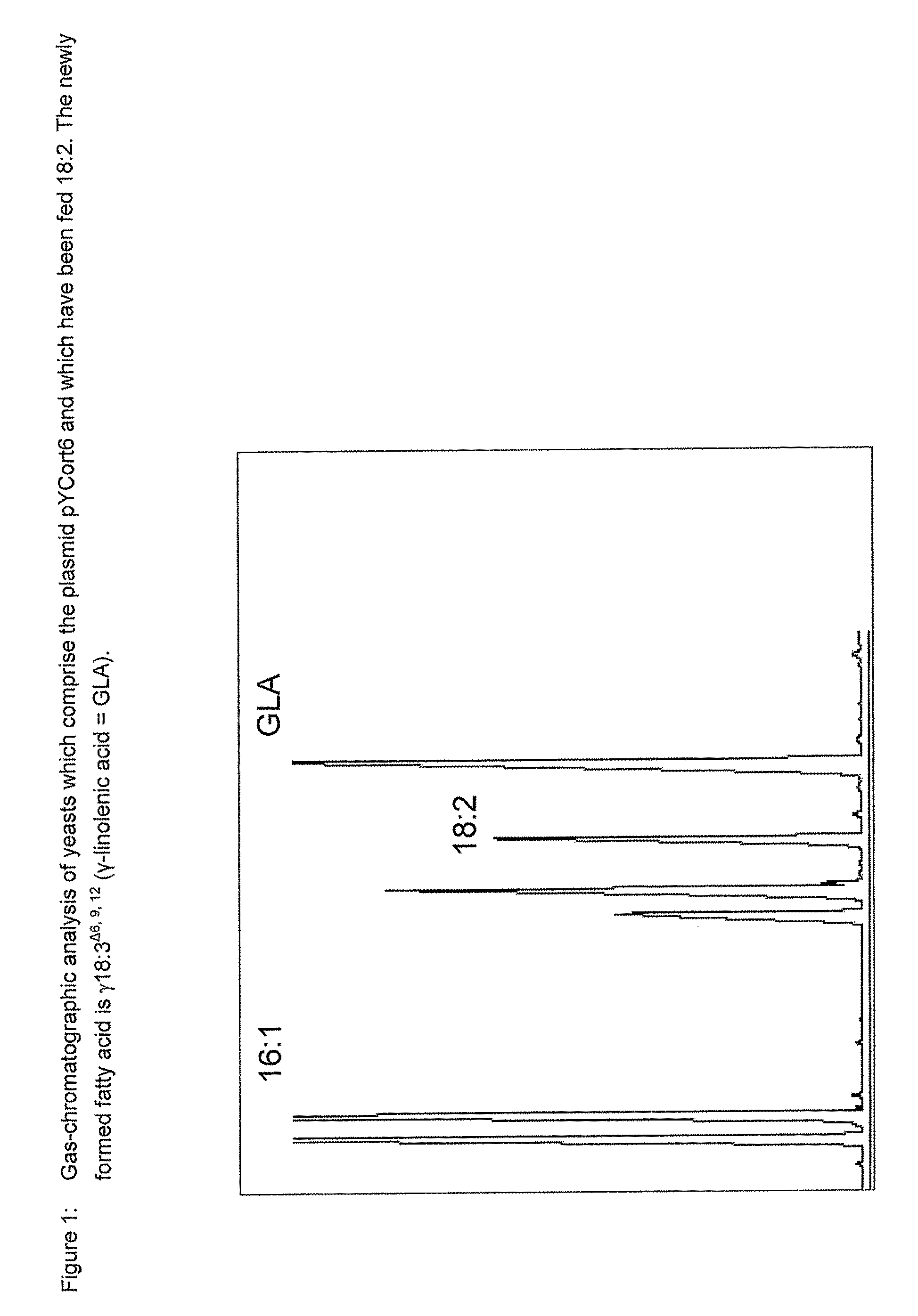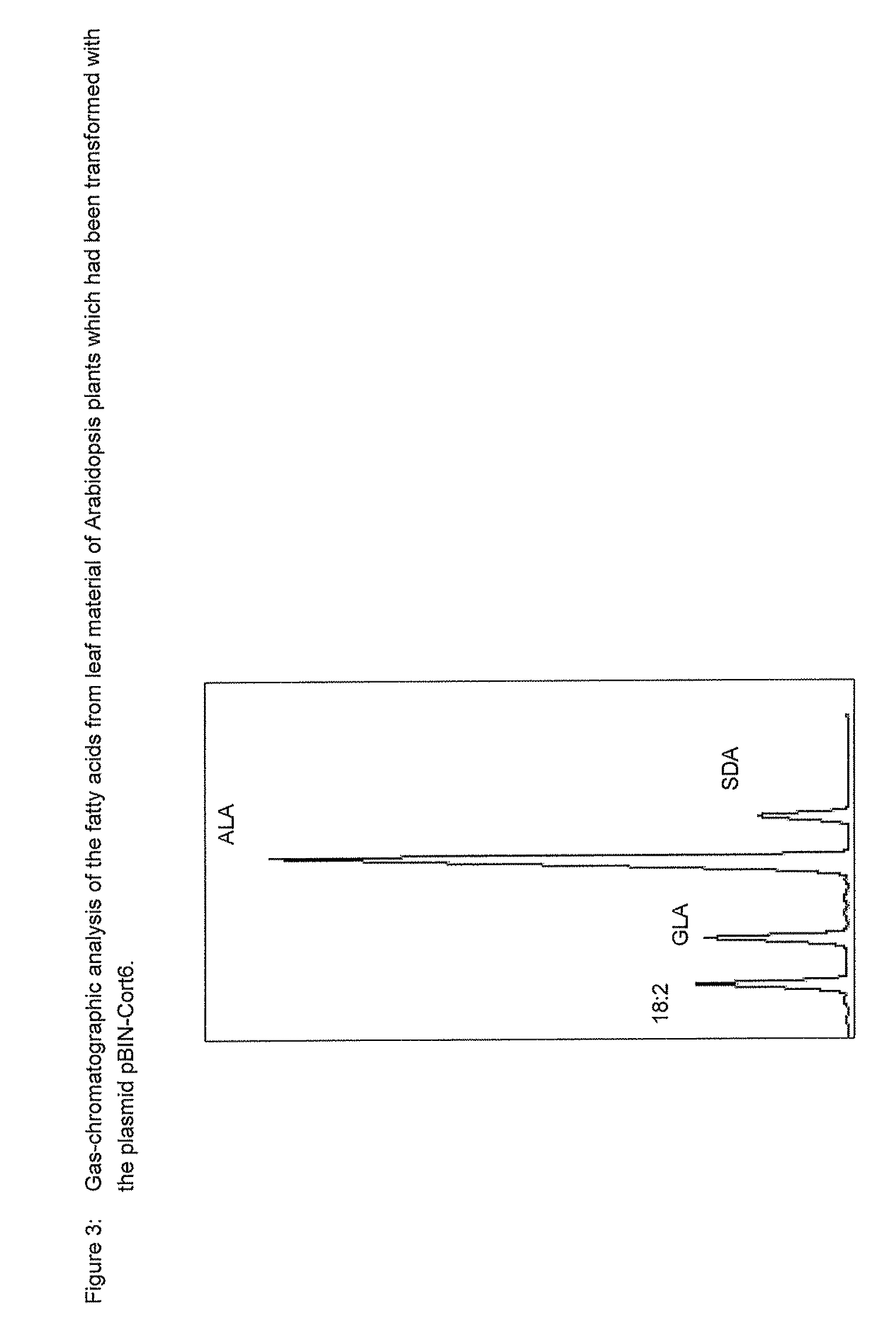Method for the production of γ-linolenic acid and/or stearidonic acid in transgenic Brassicaceae and Linaceae
a technology of linaceae and linolenic acid, which is applied in the direction of angiosperm/flowering plant, plant ingredients, enzymes, etc., can solve the problems of insufficient biochemical characterization of various desaturases, and insufficient identification of long-chain unsaturated fatty acids in higher plants
- Summary
- Abstract
- Description
- Claims
- Application Information
AI Technical Summary
Problems solved by technology
Method used
Image
Examples
example 1
General Cloning Methods
[0147]The cloning methods, such as by way of example restriction cleavages, agarose gel electrophoresis, purification of DNA fragments, transfer of nucleic acids to nitrocellulose and nylon membranes, linkage of DNA fragments, transformation of Escherichia coli cells, culture of bacteria and sequence analysis of recombinant DNA, were carried out as described in Sambrook et al. (1989) (Cold Spring Harbor Laboratory Press: ISBN 0-87969-309-6).
example 2
Sequence Analysis of Recombinant DNA
[0148]Sequencing of recombinant DNA molecules was done using a laser fluorescence DNA sequencer from ABI, by the method of Sanger (Sanger et al. (1977) Proc. Natl. Acad. Sci. USA 74, 5463-5467). Fragments resulting from a polymerase chain reaction were sequenced and checked to prevent polymerase errors in the constructs to be expressed.
example 3
Cloning of PUFA-Specific Desaturases from Primula cortusoides and Primula lutoides
[0149]While the majority of the higher plants (Angiospermae, Gymnospermae) do not synthesize Δ6-desaturated fatty acids, the precursors for the synthesis of PUFA, the families Boraginaceae, Saxifragaceae and Primulaceae comprise species which accumulate this fatty acid. This is why members of these species are raw material for identifying Δ6-desaturases.
[0150]Primula cortusoides and Primula lutoides (Eukaryota; Plantae, Tracheophyta, Angiospermae, Primulales, Primulaceae) were selected since in species Δ6-desaturated products, and here mainly 18:4Δ6,9,12,15, the precursor of EPA, accumulate in the seed. To isolate DNA, seeds were obtained from Chiltern Seeds, Cumbria, UK, and grown under the following conditions.
[0151]Prior to sowing, the seeds were soaked for at least 3 hours in cold water. The seeds were sown on potting compost with 20% sand, spaced at at least 1 cm. Under the compost there is a lay...
PUM
| Property | Measurement | Unit |
|---|---|---|
| temperatures | aaaaa | aaaaa |
| temperatures | aaaaa | aaaaa |
| melting temperatures | aaaaa | aaaaa |
Abstract
Description
Claims
Application Information
 Login to View More
Login to View More - R&D
- Intellectual Property
- Life Sciences
- Materials
- Tech Scout
- Unparalleled Data Quality
- Higher Quality Content
- 60% Fewer Hallucinations
Browse by: Latest US Patents, China's latest patents, Technical Efficacy Thesaurus, Application Domain, Technology Topic, Popular Technical Reports.
© 2025 PatSnap. All rights reserved.Legal|Privacy policy|Modern Slavery Act Transparency Statement|Sitemap|About US| Contact US: help@patsnap.com



